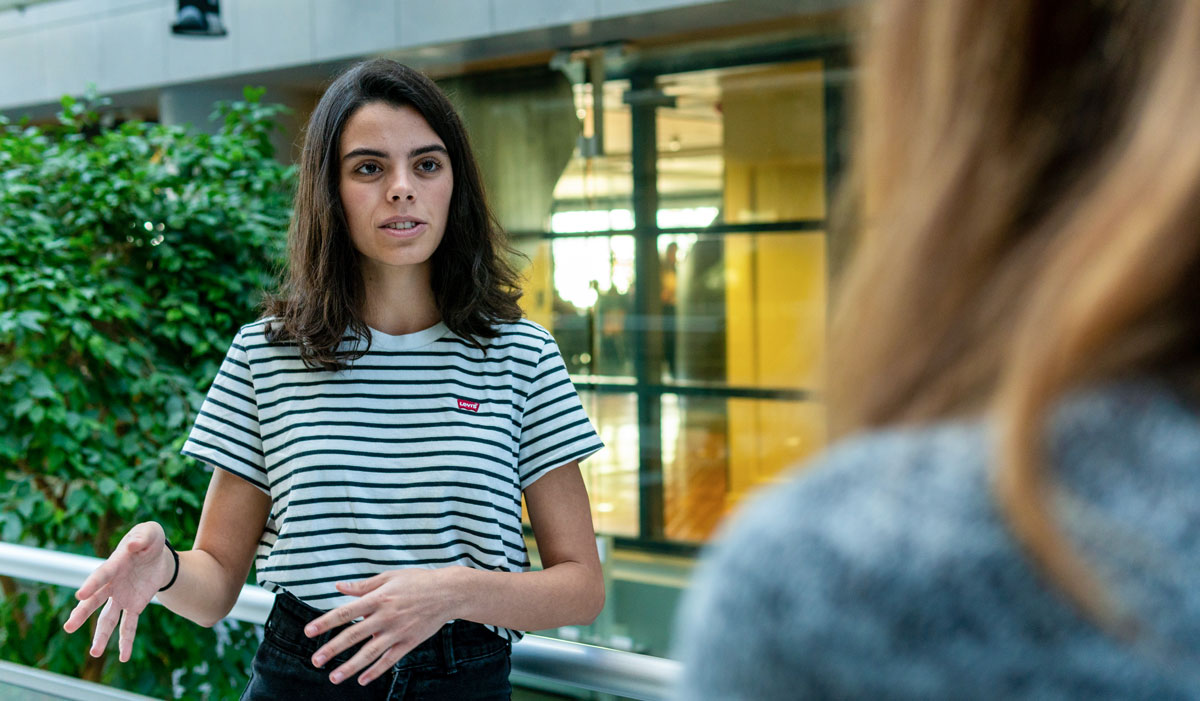Celia, a student in Bioengineering at Universidad de Valladolid, joined the De Vinci Research Center for an interdisciplinary research program in partnership with ESILV and six other healthcare and educational establishments. Her work opens up possibilities around new therapies for Alzheimer’s disease combining the best of two worlds: engineering and music.
“TalaSound” is the name of a research project that aims to apply music therapy, in particular using music from the southern regions of India, to improve the mood and functional abilities of people suffering from Alzheimer’s disease. Working as a research intern at De Vinci Research Center, Celia opened up new pathways for non-pharmacological treatment of Alzheimer’s.
A research internship in Health Engineering & Biotechnology
This interdisciplinary initiative brings together applied arts, music and health, all articulated around a sensory-embedded device. The device allows for interaction with the patient using Carnatic rhythms or talas from the southern regions of India which, unlike Western music, have an irregular rhythm and musical system.
For the development of this project, two different parts have been studied: the construction of the physical device with its electronic components and the design of embedded software for the treatment of musical pieces to determine the vertical and horizontal movements of the device.
An inter-school research program conducted in partnership with ESILV
Reflecting on the origin of the project, Celia explained that “the original idea of the TalaSound project is based on the thesis of Luc Perera, PhD student in medical sound design who is a member of the Groupe Symbiose in Ecole National Supérieure des Arts Décoratifs in Paris. This thesis is supervised by Pierre Jouvelot, a researcher in the Centre de Recherche en Informatique in the ADM group at MINES Paris Tech.
Furthermore, several student groups from different schools participate in this project: Arnaud Fréalle and Charles Paillot from EISTI in Cergy, supervised by Nga Nguyen, actually professor and researcher at the ESILV in Paris; Jérôme Grison et Antoine Costanza from Lycée Gaspard Monge, Savigny-sur-Orge, responsible of the device physical construction; students from Telecom Sud Paris et ENSIIE responsible of the mechatronic design; and the patients of the public hospital Paul Brousse (Villejuif) who participated in the first experience of this device.
During my internship, I worked with Emmanuel Sarnette, Michèle Kanhonou, Frédéric Fauberteau, and Nga Nguyen at De Vinci Research Center during my stay in France.
Because of the transportation of the device between different schools, some electronic elements in the device were damaged, so during these three months, we did improvements in order to fix some basic functionalities such as cable testing, coordinate the behavior between limit switches, redesign, and substitution of components that were damaged…
Furthermore, I improved the electronic design and worked on the code embedded in a Raspberry Pi and an Arduino card in order to understand how the communication was established, so I could learn a lot of aspects of the electronic facet and the coding part.”
Mission successfully accomplished, since, according to Nga Nguyen, in charge of the Industry & Robotics major, “the Tala Box device is functional so that it can be used for Luc Perera’s thesis defense in mid-December, and we are about to submit a research paper for an international conference as well.”
Learn more about De Vinci Research Center
Becoming a health & biotech engineer at ESILV
This post was last modified on 22 November 2022 6:05 pm







